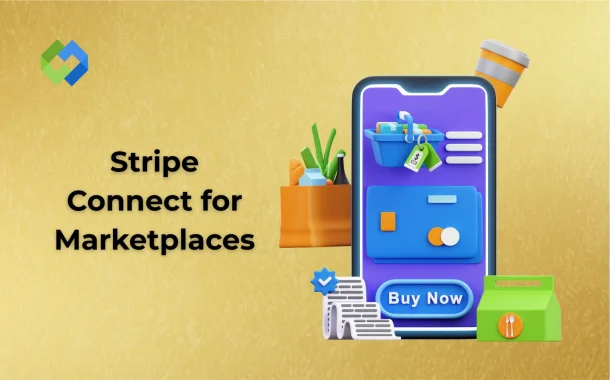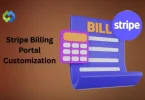Stripe makes it easy to manage payments between buyers and sellers. You can onboard sellers, collect fees, and send payouts without doing everything manually. It also keeps your platform safe with fraud checks and strong security tools. Stripe Connect works in many countries and supports many currencies.
Table of Contents
Table of Contents
Connect Stripe for Marketplaces
To connect Stripe for your marketplace, first create a Stripe account and activate Stripe Connect from your dashboard. This feature is designed to help platforms send and receive money between buyers and multiple sellers. Once you enable Connect, choose the type of account you want to offer your sellers. The three types are Standard, Express, and Custom. Each comes with different levels of control and setup.
After choosing the account type, you need to link your sellers to Stripe. Stripe provides an onboarding process that collects the necessary details like bank information and ID verification. You can use Stripe’s hosted onboarding pages or build the process into your own platform using the Stripe API. This keeps things smooth for your users and keeps your platform compliant with payment regulations.
Next, integrate the payment flow into your website or app. Use Stripe’s API to create seller accounts, accept customer payments, and automatically split the funds. You can also set your own platform fees before payouts are sent. This setup makes it easy to handle hundreds of sellers and transactions without manually tracking each one.
Types of Stripe Accounts
Standard Accounts
Standard accounts are the easiest and fastest way to get sellers connected. Each seller creates and owns their own Stripe account. They manage their dashboard, payouts, and account settings directly on Stripe’s platform. You don’t handle sensitive information, so your responsibility is lower. This option is good if you want a simple setup and don’t need to customize the seller experience much.
Express Accounts
Express accounts provide a middle ground between control and ease of use. Stripe manages the onboarding process and handles payouts automatically. Sellers get access to a simple, user-friendly dashboard where they can see their payments and update their info. You keep more control over branding and flow compared to Standard accounts, but you don’t have to build a full management system yourself.
Custom Accounts
Custom accounts give you full control over the entire payment experience. You build your own onboarding process, dashboard, and payout management for sellers. Sellers do not interact directly with Stripe.
This allows you to create a fully branded and seamless user experience. However, it requires more development effort and you take on more responsibility for compliance and support. This is best for large marketplaces that want complete control.
Setting Up Stripe Connect on Your Platform
Create and Enable Stripe Connect
Start by creating a Stripe account if you don’t have one. Then enable Stripe Connect from your Stripe dashboard. This feature is made for marketplaces that need to handle payments between multiple sellers and buyers.
Choose the Right Account Type
Decide whether Standard, Express, or Custom accounts suit your marketplace needs. This choice affects how you onboard sellers and manage payments on your platform.
Integrate Stripe Connect with Your Platform
Use Stripe’s API to connect your website or app with Stripe. Set up onboarding links or forms for sellers to link their Stripe accounts. You will also manage identity verification and tax details during this process.
Test Before Going Live
Check the payment flow to make sure money moves smoothly from buyers to sellers. Confirm fees are applied correctly. Once testing is complete, you can launch your marketplace with Stripe Connect securely handling payments.
Managing Onboarding, Payouts, and Transfers
Onboarding Sellers
When sellers join your marketplace, they need to create or connect their Stripe accounts. Stripe offers easy onboarding tools to collect important information like identity details and bank accounts. This process helps meet legal requirements and ensures sellers can receive payments.
Handling Payouts
Once sellers are onboarded, you can schedule payouts to their bank accounts. Stripe Connect allows you to control when and how often sellers get paid. You can set automatic payouts daily, weekly, or monthly depending on your marketplace rules.
Managing Transfers and Fees
Stripe Connect lets you split payments between your platform and sellers. You can collect fees for your service before transferring the rest to sellers. Transfers happen securely and quickly, so sellers get their money on time.
Security, Compliance, and Tax Reporting
Security Measures
Stripe Connect includes strong security features to protect your marketplace and users. It uses encryption to keep payment information safe. Stripe also monitors transactions for fraud and suspicious activity. This helps reduce risks for both you and your sellers.
Compliance with Regulations
Stripe helps your platform follow laws related to payments and money transfers. It manages identity verification and anti-money laundering checks for sellers. This makes sure your marketplace stays legal and avoids penalties.
Tax Reporting and Documentation
Stripe automates tax reporting by collecting necessary tax information from sellers. It generates tax forms like 1099s for US sellers and provides reports to help with your marketplace’s tax filings. This simplifies the tax process for you and your sellers.
Conclusion
Stripe Connect is a powerful tool for marketplaces. It helps you manage payments, onboard sellers, and send payouts with ease. You don’t need to build a full payment system from scratch. Stripe handles security, tax reporting, and compliance for you.
Whether you choose Standard, Express, or Custom accounts, Stripe gives you flexibility and control. It works well for both small and large platforms. With simple tools and strong support, Stripe Connect makes running a marketplace much easier.














